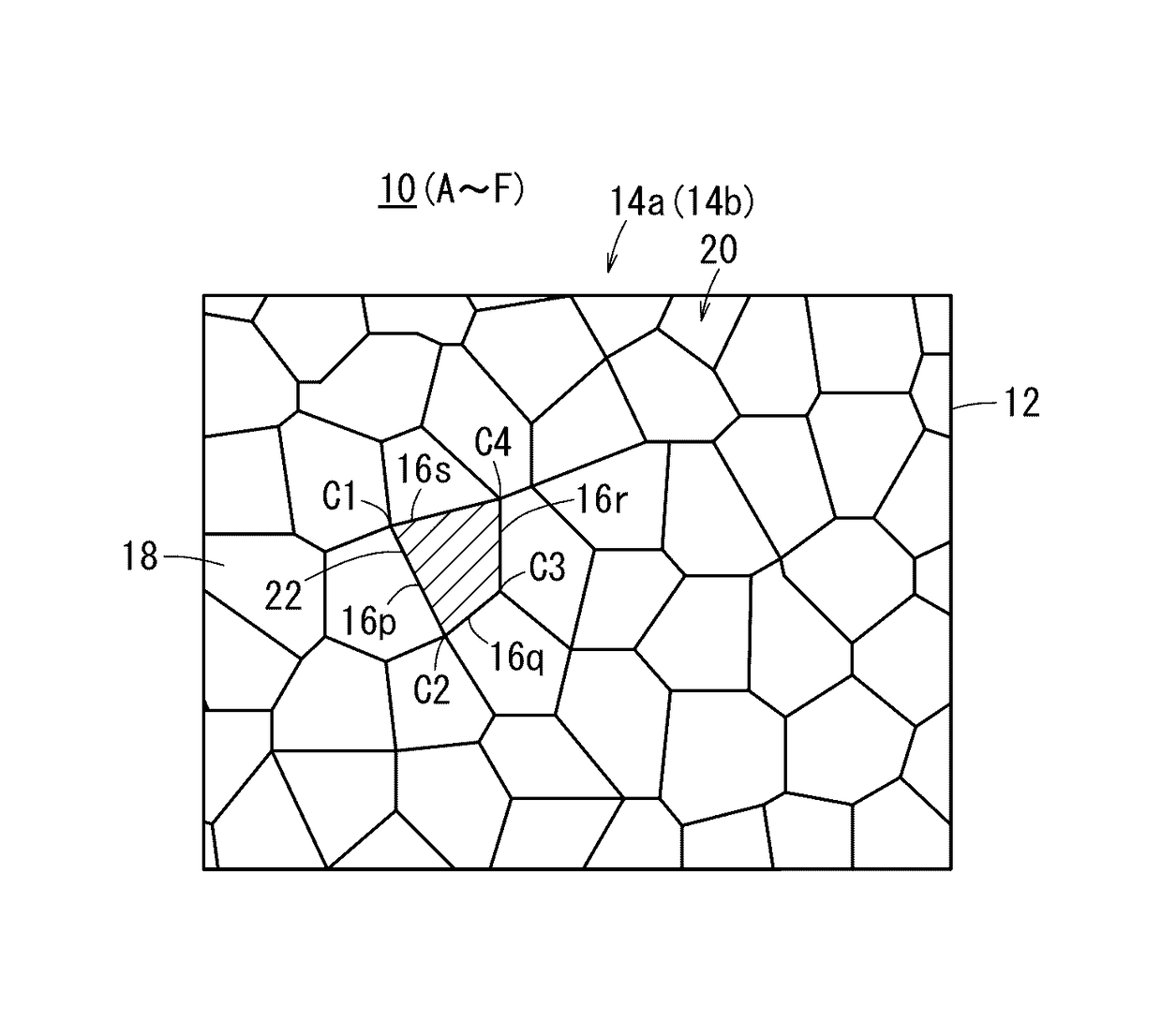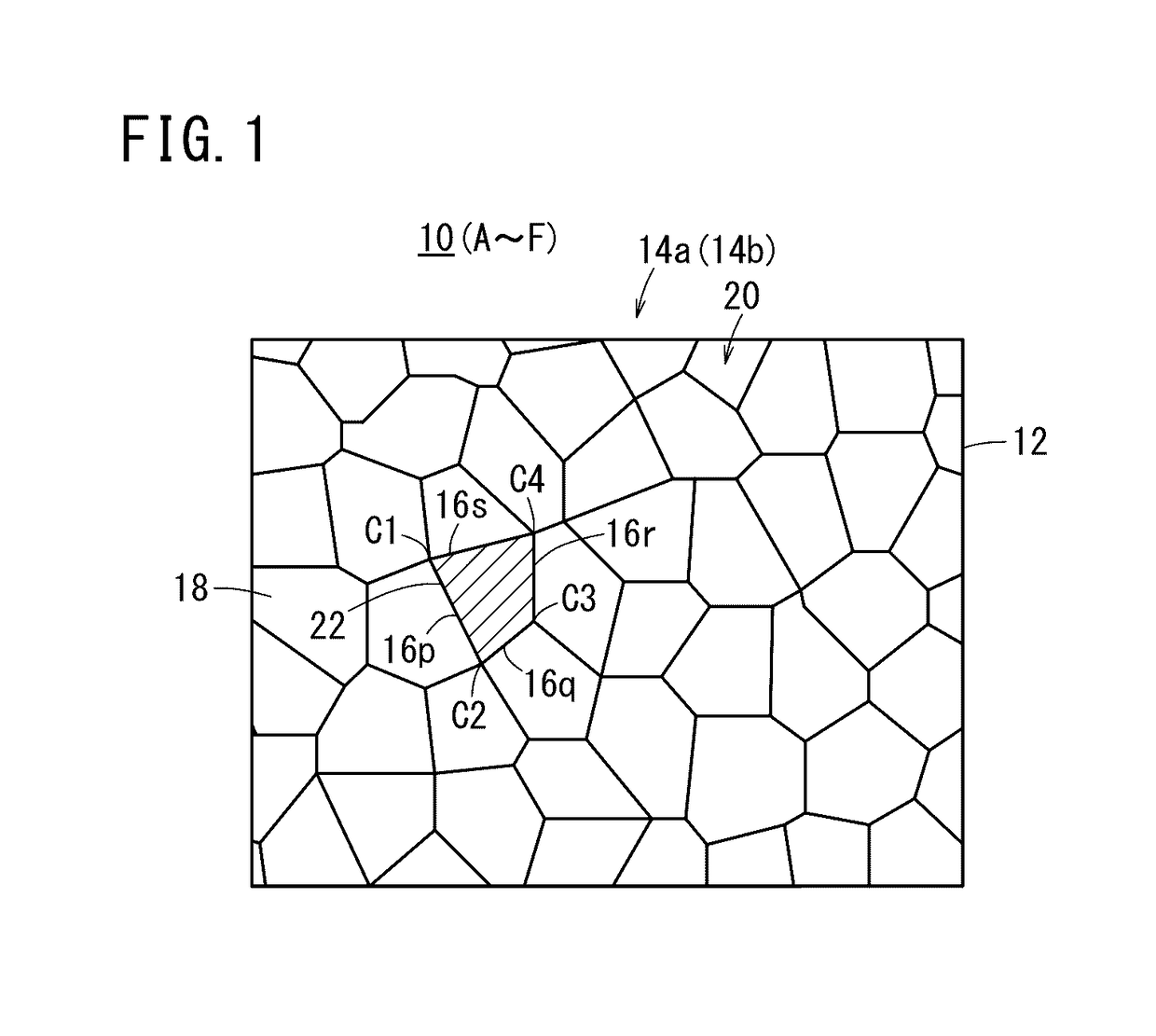Conductive sheet, touch panel, display device, method for producing said conductive sheet, and non-transitory recording medium
a technology of conductive sheets and display devices, which is applied in the direction of conductive layers on insulating supports, instruments, other domestic articles, etc., can solve the problems of graininess or roughness, etc., and achieve the effect of easy to sense graininess or roughness, and easy to be seen by users
- Summary
- Abstract
- Description
- Claims
- Application Information
AI Technical Summary
Benefits of technology
Problems solved by technology
Method used
Image
Examples
example applied
[Example Applied to Resistive Film Type Touch Panel]
[0407]The present invention can be applied not only to an electrostatic capacitance type, but also to a resistive film type (as well as to a digital type, or an analog type) of touch panel 160. Below, with reference to FIGS. 51 to 53, the structure and operational principles of such a touch panel 160 will be described.
[0408]A digital resistive film type touch panel 160 comprises a lower side panel 162, an upper side panel 164 arranged in confronting relation to the lower side panel 162, a frame adhesive layer 166 bonded to peripheral edge portions of the lower side panel 162 and the upper side panel 164, and which serves to electrically insulate both the panels from each other, and an FPC 168 (Flexible Printed Circuit) sandwiched between the lower side panel 162 and the upper side panel 164.
[0409]As shown in FIG. 51 and FIG. 52A, the upper side panel 164 includes a first transparent substrate 170a made from a flexible material (e.g...
##ventive example 1
Inventive Example 1
[0490]A conductive sheet 10 according to the first inventive example was manufactured using polychlorotrifluoroethylene (PCTFE) with an index of refraction n1=1.42 as the first protective layer 26a. In this case, the relative index of refraction nr1 was nr1=(1.42 / 1.64)=0.86.
##ventive example 2
Inventive Example 2, Comparative Examples 1 to 3
[0491]A conductive sheet 10 according to the second inventive example was manufactured using polymethyl methacrylate (PMMA) with an index of refraction n1=1.50 as the first protective layer 26a. In this case, the relative index of refraction nr1 was nr1=(1.50 / 1.64)=0.91.
[0492]Further, concerning comparative example 1 corresponding to the pattern PT1 (see FIG. 57A), comparative example 2 corresponding to the pattern PT2 (see FIG. 57B), and comparative example 3 corresponding to the pattern PT3 (see FIG. 57C), respective samples were made by covering the aforementioned patterns with polymethyl methacrylate.
Inventive Example 3, Inventive Example 7
[0493]Conductive sheets 10 according to the third and seventh inventive examples were manufactured using polystyrene (PS) with an index of refraction n1=1.60 as the first protective layer 26a. In this case, the relative index of refraction nr1 was nr1=(1.60 / 1.64)=0.97.
PUM
| Property | Measurement | Unit |
|---|---|---|
| width | aaaaa | aaaaa |
| width | aaaaa | aaaaa |
| width | aaaaa | aaaaa |
Abstract
Description
Claims
Application Information
 Login to View More
Login to View More - R&D
- Intellectual Property
- Life Sciences
- Materials
- Tech Scout
- Unparalleled Data Quality
- Higher Quality Content
- 60% Fewer Hallucinations
Browse by: Latest US Patents, China's latest patents, Technical Efficacy Thesaurus, Application Domain, Technology Topic, Popular Technical Reports.
© 2025 PatSnap. All rights reserved.Legal|Privacy policy|Modern Slavery Act Transparency Statement|Sitemap|About US| Contact US: help@patsnap.com



